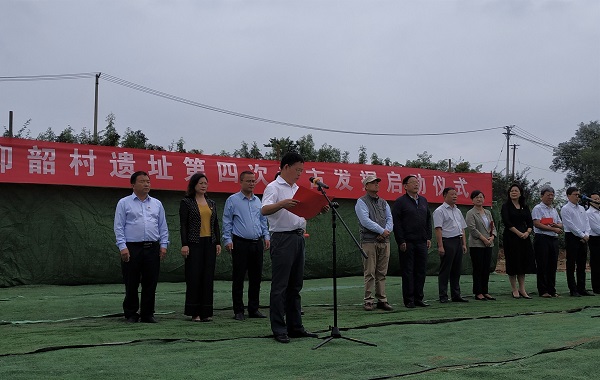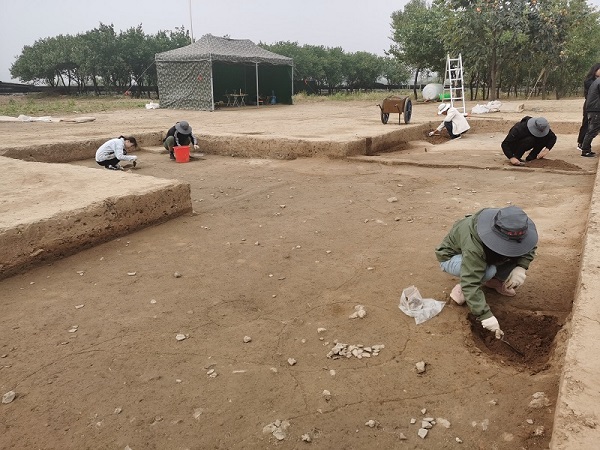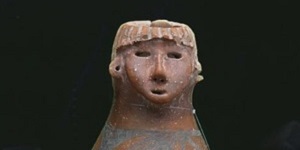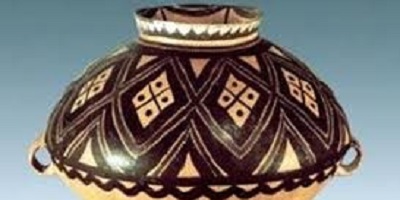Yangshao Culture: 100 Year Research History and Heritage Impact
Chinese archaeologists launch the fourth excavation at the Yangshao village site in the 99th year since Anderson’s first excavation in 1921
Professor Marie Louise Stig Sørensen and Dr Guohua Yang
Johan Gunnar Andersson’s discovery of the Yangshao Culture in 1921 continues to be seen as a watershed in the development of Chinese archaeology, so coming up to the 100 years anniversary means that activities are being mounted towards its celebration. The following account of the new excavation at the Yangshao village is based on two interviews.
One, on the 7th October 2020 with Dr Wei Xingtao was conducted by Dr Guohua Yang on Wechat. Dr Wei Xingtao is one of the advisors on the CHRC project “Yangshao Culture: 100 Year Research History and Heritage Impact” and he is the Director of the Fourth Excavation of the Yangshao Village Sites, and Deputy Director of Henan Provincial Institute of Cultural Heritage and Archaeology. The second interview, also conducted by Dr Guohua Yang, took place on the 22nd August 2020 on Wechat and was with Mr Shuanchao Yang, administrator of the Yangshao Cultural Research Centre of Chinese Academy of Social Sciences.

Opening ceremony of the fourth excavation at the Yangshao village site
(Photo by Mr Shuanchao Yang on the 22nd August 2020)
The launch of the fourth archaeological excavation of the Yangshao Village site, Mianchi County, Henan Province, is explicitly linked to the forthcoming commemoration of the centenary of the birth of Chinese archaeology and the discovery of the Yangshao Culture. The excavation is expected to provide valuable new archaeological material for the study of the Yellow River culture and the cultural development of the region. Originating in the middle reaches of the Yellow River, the Yangshao Culture has been assigned a central role in arguments about the development of a ‘Chinese civilisation’. Archaeologically, this early example of sedentary agricultural communities and the very advanced pottery-making technology are of considerable interest.
On the 22nd August 2020, the fourth excavation of the Yangshao Village site began. The previous excavations took place in 1921, in 1951 and in 1980. During these excavations, a large amount of pottery and stone tools were unearthed, which increased the international significance of the site. Hence, the site of YangshaoVillage has become important for Chinese and foreign archaeologists. More than 5,000 sites have been discovered over the years, and more than 200 sites have been tested or excavated, covering a total of area of 194,000 square metres. Over the nearly 100 years since its discovery much data has been accumulated and more than 200 investigative bulletins and reports, and more than 500 research articles have been produced. The discovery of the site of the Yangshao Culture is included on the list of the “100 important archaeological events in 20th century China” and is routinely included in the list of the “Top ten archaeological discoveries in Henan province”. In 1961, the State Council of China announced ‘Yangshao Village Cultural Relics Site’ as one of the first group of the “National key cultural relics protection units”, the national list of heritage sites.
The first excavation, conducted by Johan Gunnar Anderson and Yuan Fuli in 1921, was, as stated, influential in the development of modern archaeology in China especially as regards field methodology and research aims. It gave the name ‘Yangshao Culture’ to this important Neolithic Culture (5000-3000 BC), based on the location of its first discovery, according to common archaeological practice.
In 1951, two important Chinese archaeologists from the Institute of Archaeology of the Chinese Academy of Sciences carried out the second excavation at the Yangshao Village site. They were Xia Nai (a pioneering Chinese archaeologist, being the first Chinese to gain a PhD in Egyptology from UCL, University of London) and An Zhimin (an archaeologist who developed his expertise within China). The main aim of the second excavation was to clarify the cultural relationship of the Yangshao village site to remains found at sites elsewhere since 1921. In addition to Yangshao culture pottery, new types of pottery vessels were also found, revealing the presence of a different cultural group within the site. However, at the time, this was not recognized as a separate, later culture at the sites (the Longshan Culture). This was clarified in the subsequent excavations. During the second excavation, the sites of Buzhaozhai, Xiachengtou and YangheVillages near YangshaoVillage were also investigated.
In 1980, in order to explore the settlement organisation and living conditions of the Yangshao people in more details, Ding Qingxian from the Henan Provincial Institute of Cultural Heritage and Archaeology undertook the third excavation of the site. This excavation helped to further clarify the cultural connotation and significance of the Yangshao Village site, and it confirmed the separate identity of the Longshan Culture. It established that the Yangshao Culture Village Site should be divided into four periods: the early period of the Yangshao Culture, the middle period of the Yangshao Culture, the later period of the Yangshao Culture, and the period of the Longshan Culture.
Apart from the straightforward archaeological importance of the fourth excavation, the excavation project leader Wei Xingtao also made explicit reference to how the work matches the ambitions for archaeological work recently expressed by President Xi Jinping. Wei Xingtao stated that “At a time when General Secretary Xi Jinping has called for attention to the Culture of the Yellow River and the comprehensive revival of traditional culture … . A major research project on the process of civilization in the Central Plains, the glorious mission of the fourth excavation of Yangshao Village site has fallen on our shoulders historically”. Obviously, such high-level attention may have fuelled the desire for the excavation; but advances in archaeological techniques and the much more comprehensive knowledge of the Yangshao Culture more widely also make this an important endeavour. We, in particular hope, that more nuanced insights into the character of life on the site will emerge, potentially enriching our understanding of the organization of craft activities and also further insights into the domesticity of a Yangshao settlement. It is, therefore, most welcomed to learn from Wei Xingtao that, “We have assembled a capable team of excavators and researchers. We are determined to stand at the forefront of disciplines, set up a clear academic target, adhering to the concept and method of settlement archaeology, with a combination of multi-disciplinary and multi-technology methods and having comprehensive access to the site of Yangshao village to get rich ancient cultural, social, and human information.”
Wei firmly believes that the fourth archaeological excavation of the Yangshao Village site will be a success, which will provide a solid basis for a much better understanding of this Neolithic society and thus contribute to the wider study of the development of cultures on the central Plains and Yellow River. Moreover, having such impact and gaining wider public and political notice will make a positive contribution to wider aims of protecting important cultural remains. It is understood that the excavation, jointly undertaken by the Henan Provincial Institute of Cultural Heritage and Archaeology, Sanmenxia City Institute of Cultural Heritage and Archaeology will complete the archaeological excavation of the southern core area of the site and in the northern and central part.

Archaeological work on the fourth excavation at the Yangshao village site
(Photo by Mr Shuanchao Yang on the 7th October 2020)






